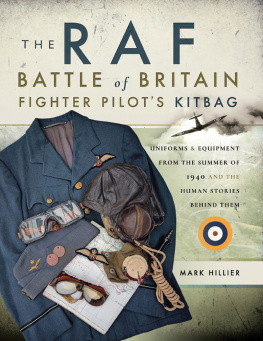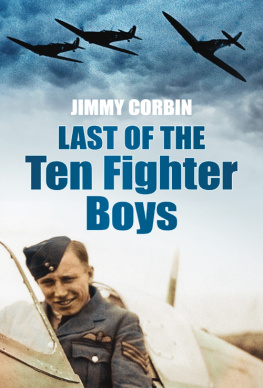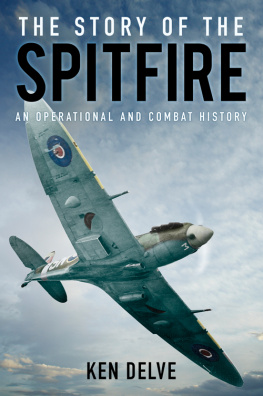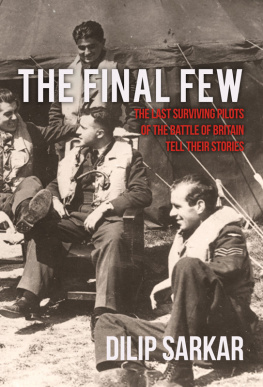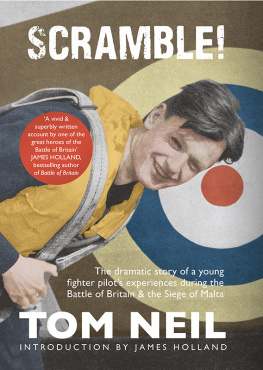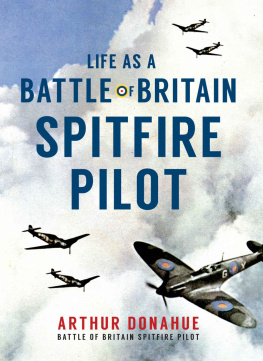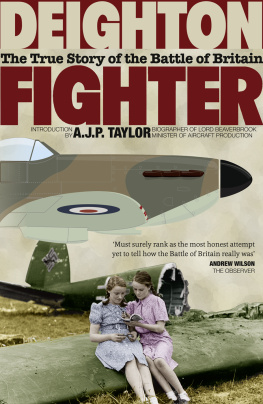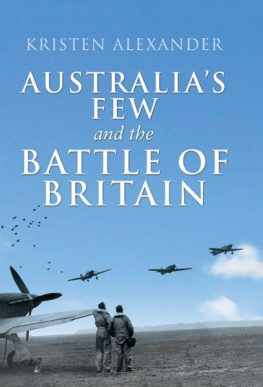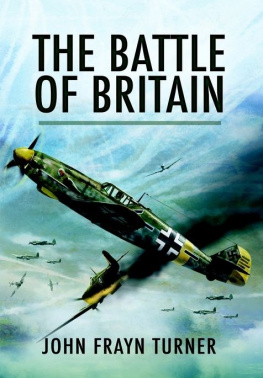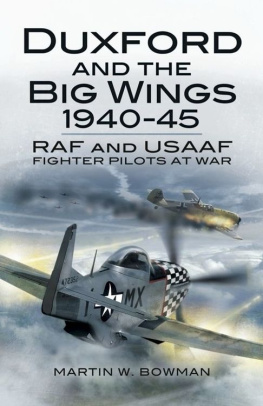
THE RAF
BATTLE of BRITAIN FIGHTER PILOTS KITBAG
UNIFORMS & EQUIPMENT FR OM THE SUMMER OF 1940 AND THE HUMAN S TORIES BEHIND THEM
Also by Mark Hillier
Westhampnett at War
To War in a Spitfire
Joe Roddis: In Support of the Few
Suitcases, Vultures and Spies: From Bomber Command to Special Operations The Story of Wing Commander Thomas Murray DSO DFC *
A Fighter Command Station at War: A Photographic Record of RAF Westhampnett from the Battle of Britain to D-Day and Beyond
War Birds: the Diary of a Great War Pilot
THE RAF
BATTLE of BRITAIN FIGHTER PILOTS KITBAG
UNIFORMS & EQUIPMENT FR OM THE SUMMER OF 1940 AND THE HUMAN S TORIES BEHIND THEM
Mark Hillier
THE RAF BATTLE OF BRITAIN FIGHTER PILOTS KITBAG
Uniforms & Equipment from the Summer of 1940 and the Human Stories Behind Them
This edition published in 2018
by Frontline Books
An imprint of Pen & Sword Books Limited,
47 Church Street, Barnsley,
South Yorkshire, S70 2AS.
Copyright Mark Hillier, 2018
ISBN 978-1-47384-999-0
eISBN 978-1-47385-000-2
Mobi ISBN 978-1-47385-001-9
The right of Mark Hillier to be identified as the author of this work has been asserted by him in accordance with the Copyright, Designs and Patents Act 1988.
A CIP catalogue record for this book is available from the British Library
All rights reserved. No part of this publication may be reproduced, stored in or introduced into a retrieval system, or transmitted, in any form, or by any means (electronic, mechanical, photocopying, recording or otherwise) without the prior written permission of the publisher. Any person who does any unauthorized act in relation to this publication may be liable to criminal prosecution and civil claims for damages.
Pen & Sword Books Limited incorporates the imprints of Atlas, Archaeology, Aviation, Discovery, Family History, Fiction, History, Maritime, Military, Military Classics, Politics, Select, Transport, True Crime, Air World, Frontline Publishing, Leo Cooper, Remember When, Seaforth Publishing, The Praetorian Press, Wharncliffe Local History, Wharncliffe Transport, Wharncliffe True Crime and White Owl.
For a complete list of Frontline titles please contact
FRONTLINE BOOKS
47 Church Street, Barnsley, South Yorkshire, S70 2AS, United Kingdom
E-mail:
Website: www.frontline-books.com
This book is dedicated to the memory of the late Joseph Joe Roddis (1921-2017), one of the RAF groundcrew who so valiantly supported the Few.

A selection of RAF fighter pilots clothing and equipment from the Battle of Britain period. (Simon Lannoy Collection)
INTRODUCTION
I have always had a keen interest in the history of the Royal Air Force and, in particular, the Battle of Britain period. I love to read first-hand accounts and have been privileged to meet some of The Few and listen to their stories. I have also been fortunate to have had the opportunity to fly a number of vintage aircraft types representative of those used during flying training by the RAF in the Second World War.
Such experiences have only served to heighten my interest in those dramatic days of 1940, and this has included investigating every aspect of the fighter pilots clothing and the equipment he was issued with, or was at his disposal. This has led to the discovery of a surprisingly wide assortment of items and artefacts, including personal adaptations of standard kit.
I have chosen to limit the items to those which were used and issued or purchased by those aircrew who were entitled to wear the Battle of Britain Bar to the 1939-45 Star, and covers only the period from 10 July 1940 to 31 October 1940. This would have included pilots flying such iconic aircraft as the Hawker Hurricane and the Supermarine Spitfire, as well as the Boulton Paul Defiant and Bristol Blenheim. The book also includes uniforms from some of the other aircrew from air forces that took part under the command of the RAF such as the Fleet Air Arm, Royal Australian Air Force, Polish, Czech and Free French amongst others.
The Battle of Britain kit bag starts with the headgear, working down to flying clothing and equipment and then lastly uniforms and insignia. Where possible, and where known, the Air Ministry references have been given but it is accepted that many items were private purchase or not official kit. It must also be accepted that this is not a definitive collection and that there may well be other items used during the Battle of Britain which are not featured here.
Mark Hillier,
Fontwell, West Sussex, 2017.
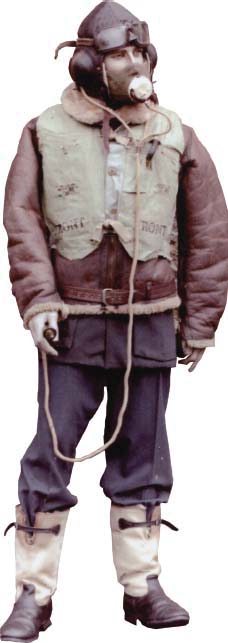
A typical pilots equipment during the Battle of Britain, starting at the head with the B Type flying helmet, Mk.IIIA Goggles and D Type oxygen mask. The Irvin jacket and Mae West are worn over the service uniform. The boots are 1939 Pattern. (Simon Lannoy Collection)
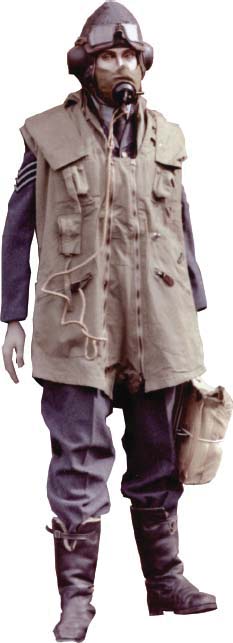
The typical attire for a Blenheim or Defiant crew member, the Irvin Harness suit worn over the service uniform to save space, again a B Type flying helmet, but this time Mk.III goggles with the broader padding round the lenses. Note also the earlier 1936 pattern flying boot. (Simon Lannoy Collection)
ACKNOWLEDGEMENTS
Without the established research and work carried out by Mick J. Prodger, and his ongoing support, this publication would not have been possible. Also, the expertise and guidance of experienced collectors such as Simon Lannoy and Phil Phillips, who have given their valued time and knowledge, has been invaluable. Thanks must also go to my long-suffering wife Kate and my two lovely children, Molly and George, for their continued support.
Section 1
FLYING HELMETS
Leather flying helmets became available during the very early stages in the history of aviation, offering a degree of protection from the elements and keeping the head warm from the icy blasts encountered in open cockpit aircraft.
As aircraft and the equipment they carried developed, helmet design also progressed. In due course, some had modifications to take a Gosport tube, a chrome or stainless-steel earpiece that connected to a speaking tube to allow conversation with other individuals in an aircraft. Wind and engine noise was, however, frequently a limiting factor for the effectiveness of this method.
By the time the RAF had moved on to higher performance monoplanes that could operate at high altitude, the helmet had to include the ability to connect to an oxygen mask or microphone for communication and take earpieces so that the pilot could communicate using radio transmissions.
The mainstay for the Battle of Britain was the B Type flying helmet. Group Captain Bobby Oxspring DFC, AFC once recalled how his morning duties included setting up his cockpit and checking his helmet to ensure all was ready in case he was scrambled: The next move was to carefully arrange the safety harness and parachute straps, plug in the helmet leads to radio and oxygen so that on a scramble the least possible time would be lost in getting strapped in and away. Quick checks to see that the oxygen was flowing through the mask.

